An industrial piercing is a body piercing that goes through two points on the ear instead of the traditional one. It is a relatively new piercing modification, and because of that, there is not much information about how to properly care for it and what to do if it becomes infected.
If you have a piercing, it is essential to know the signs of infection to spot it early and treat it before it becomes a more severe problem. The most common symptom of an infected industrial piercing is redness and swelling around the piercing site.
In this post, we will discuss what an infected industrial piercing looks like, how to treat it, and how to prevent infection from occurring in the first place.
What Is an Industrial Piercing?
Industrial piercing is a body piercing that goes through the ear’s upper cartilage. It gets usually done in one sitting but can be done in two if the industrial piercer uses a longer needle. The industrial piercing gets its name because people who worked in industrial jobs, such as factory workers and sailors, fancied it. Piercing enthusiasts created it in the early 1990s, looking for something new and different.
Industrial piercing has become increasingly popular in recent years, with celebrities like Rihanna and Miley Cyrus helping to make it mainstream. With its popularity, both men and women get this type of body piercing. Industrial piercings are unique and can give your ears a very cool look. However, they are also more prone to infection than other piercings. This is because industrial piercings go through a thicker layer of skin than different types of ear piercings.
If you’re considering getting an industrial piercing, it’s essential to do your research and choose a reputable piercer. Make sure you follow all the piercer aftercare instructions carefully to reduce your risk of infection.
Related article: Everything you should know before getting an industrial piercing
Industrial Piercing: Pain, and Healing time
The pain level for an industrial piercing is usually somewhere between a standard lobe piercing and a cartilage piercing. It depends on your pain tolerance, though – some people report feeling minimal discomfort, while others find it quite painful. Either way, it’s nothing that you can’t handle!
The healing time usually takes six to eight weeks for an industrial piercing to heal completely. During this time, it’s essential to clean your piercing regularly and avoid any activities that could irritate or damage it. Once it’s healed, you can enjoy your new industrial piercing worry-free.
What Causes Infection of Industrial Piercings?
Industrial piercings are very susceptible to infection because they go through two layers of skin. The most common cause of the condition is bacteria that get into the piercing during healing. Bacteria can also enter the piercing if it’s not cleaned correctly. Most likely, bacteria will become trapped in the piercing. Industrial piercings take longer to heal than other piercings, giving bacteria more time to cause an infection.
Another common reason is that the piercing is not done correctly. If the piercer does not use sterile equipment or does not clean the area suitably, it can lead to infection. Improper piercings can be done with unsanitary equipment or in an unclean environment. If you get the piercing and do not take care of it properly, it can also lead to infection if it’s not cleaned regularly or touched too much.
It is essential to clean your industrial piercing jewellery regularly. This will help to prevent infection. There are many different types of industrial piercing jewellery. Some people use rings, while others use barbells. The kind of jewellery you choose should get based on your personal preference and your piercer’s advice. If you choose to wear rings, make sure they come made of a safe material such as surgical steel or titanium. Avoid wearing industrial piercing jewellery made of gold or silver, as these metals can cause allergic reactions.
Symptoms of Industrial Piercing Infection
If you think you have an infected industrial piercing, the symptoms are similar to other infections. You can look out for several things.
- First, your piercing may be red and inflamed. You may also see pus or discharge coming from the piercing.
- You may also experience pain, swelling, tenderness, and crusting around the piercing site if you have these symptoms.
- Industrial piercings are prone to keloid scars, so it is also essential to get treatment for infection quickly to avoid scarring.
Aftercare Tips For Industrial Piercing
Suppose you’ve recently gotten an industrial piercing; congratulations! This unique and stylish piercing is sure to turn heads. But as with any piercing, it’s essential to take proper care of your new body jewellery. Also, it is vital to care for your industrial piercing properly, avoid touching the piercing unnecessarily, and keep the area dry. Here are some care tips on how to keep your industrial piercing healthy and infection-free:
- Clean your hands thoroughly before touching or cleaning your piercing.
- Gently clean the piercing twice a day with saline solution or sea salt mixed with water and mild soap.
- Avoid harsh chemicals and cleaners, which can irritate the skin around the piercing.
- Apply a thin layer of antibiotic ointment to the pierced area if it looks red or irritated.
- Avoid playing with or moving the jewellery too much, as this can irritate the piercing.
- Avoid using makeup, lotions, or creams near your piercing. These products can trap dirt and bacteria around the piercing and cause an infection.
- If you have an industrial piercing, avoid sleeping on it for the first few weeks.
- Try sleeping on your back or side to avoid putting pressure on the piercing. This will help prevent irritation and infection.
- Stay away from activities or contact sports that could cause trauma to your industrial piercing.
- Be sure to clean your bedding regularly. Dry clean sheets, pillowcases, and blankets in hot water with laundry detergent to kill any bacteria present.
- Remove any crust around the jewellery with a cotton swab soaked in saline solution.
- Avoid swimming or soaking in hot tubs until the piercing has completely healed.
You probably are not doing something right if you notice any redness, swelling, discharge, or pain around the piercing. These could be signs of an infection. With proper aftercare, your industrial piercing will heal quickly and be a stylish addition to your look for years to come.

How to Clean an Industrial Piercing the Right Way
It’s essential to clean it regularly and properly to avoid infection. Here’s how to do it properly:
- First, wash your hands thoroughly with soap and water.
- Next, soak a cotton ball in a sterile saline solution or warm water with mild soap.
- Gently clean around the piercing, being careful not to touch the actual jewellery.
- Rinse the area with sterile saline solution or plain water.
- Dry the area with a clean paper towel or gauze pad.
- Repeat this process twice a day until the industrial piercing has healed.
If you follow these steps, you’ll be well on your way to having a healthy and healing industrial piercing.
Side Effects of Getting an Industrial Piercing
If you’re considering getting an industrial piercing, it’s essential to be aware of the potential side effects. While industrial piercings are generally safe, there is always a risk of infection or other complications. The most prevailing side effect is swelling and pain at the piercing site. This is usually temporary and can get treated with over-the-counter medication. However, if the pain worsens or continues for more than a few days, you should see a doctor. Other potential side effects include:
- Infection: Industrial piercings have a higher risk of infection than other body piercings. This is because they go through two layers of skin and are more likely to encounter bacteria.
- Bleeding: It’s normal to have some bleeding after an industrial piercing. However, if the bleeding is heavy or lasts for more than a few days, you should see a doctor.
- Scarring: Industrial piercings can sometimes cause scars. If you’re concerned about scarring, talk to your piercer about using a more miniature barbell.
- Migration: Industrial piercings have a higher migration risk than other body piercings. This means that the jewellery moves out of place over time. If this happens, you’ll need to see a piercer to reposition the jewellery.
- Rejection: Industrial piercings have a higher risk of rejection than other types of body piercings. This means that your body pushes the jewellery out. If you notice this happening, visit a piercer to reposition the jewellery.
Treatment For Industrial Infection
The best way to treat an infection in your industrial piercing is to book an appointment with your doctor or piercer as soon as possible. They will be able to look at the piercing and determine whether it is infected. If it is, they will start you on a course of treatment to clear up the infection.
With proper treatment, most infections will clear up within a few weeks. However, it’s crucial to finish the entire treatment plan even if you start to feel better after a few days. This ensures that the infection is completely gone and doesn’t come back.
Treating an infected industrial piercing usually involves antibiotics. Sometimes, you may need to get the piercing removed entirely. If this is the case, your doctor will likely prescribe a course of oral antibiotics. You can also do this at home to treat an infected industrial piercing.
First, Clean the area with warm water and soap multiple times a day. You can apply a thin layer of antibacterial ointment to the site. If the pain is severe, you can take over-the-counter pain medication such as ibuprofen. Visit a doctor if your symptoms do not improve after a few days of home treatment.
Warm compress
If you have an industrial piercing that has become infected, you may be wondering what you can do to treat it. One home remedy that can help is a warm compress. To make a warm compress, soak a clean cloth in hot water and then apply it to the affected skin area for a few minutes. The compress’s heat can help draw out infection and promote healing. Repeat this regimen several times a day until your industrial piercing has healed.
Diluted tea tree oil
For industrial piercing aftercare, a diluted tea tree oil solution. You should mix one part of tea tree oil and four parts of distilled water. Again, soak a cotton ball in the solution and apply it to your industrial piercing for five minutes.
If your industrial piercing does not seem to be improving with home treatment, or if it is becoming increasingly painful, you should see a doctor or piercer as soon as possible. They will be able to advise you on further treatment options and make sure that your industrial piercing heals properly.
Who shouldn’t get an industrial piercing?
If you’re thinking about getting an industrial piercing, you first need to know a few things. Industrial piercings pass through two points in the upper cartilage of the ear and usually require the use of a barbell-style jewellery piece. This piercing type is not for everyone – if you have sensitive skin or are prone to keloids, you may want to reconsider.
Industrial piercings also take longer to heal than other types of piercings. The initial healing process usually takes anywhere from four to eight weeks, and it’s important to avoid sleeping on the piercing during this time. After the intended healing period, it can take up to six months for the piercing to fully heal. If you’re still sceptical about whether an industrial piercing is right for you, it’s always best to stay on the side of caution and consult with a professional piercer.
In general, some people who should avoid getting an industrial piercing include:
People with sensitive skin or allergies: If you have sensitive skin or are allergic to certain metals, then an industrial piercing may not suit you. Be sure to discuss your options with a professional piercer before getting pierced.
People prone to keloids: Keloids are raised scars that can form around piercings. If you’re prone to keloids, you may want to avoid an industrial piercing.
If you’re with active infections: If you have an operational condition in or around the area where you want piercing, it’s best to wait until the infection has cleared before getting shot. Otherwise, you risk infecting your new piercing.
If you have any questions about industrial piercings, consult with a professional piercer before getting pierced. Piercers should be able to assess your case and give you the best advice on if an industrial piercing is right for you.
Conclusion
If your piercing is infected, don’t hesitate to see a doctor right away. Early treatment is essential for preventing severe health complications. Have you found this article helpful? Please share it with others who may be wondering what to do about an infected industrial piercing.
Read more articles on piercings:
–Conch piercing: Everything you need to know before you get it
–Tragus piercing: healing, aftercare, pain and side effects
–Helix Piercing: Healing, Aftercare, Pain, Side effects














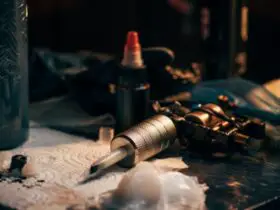




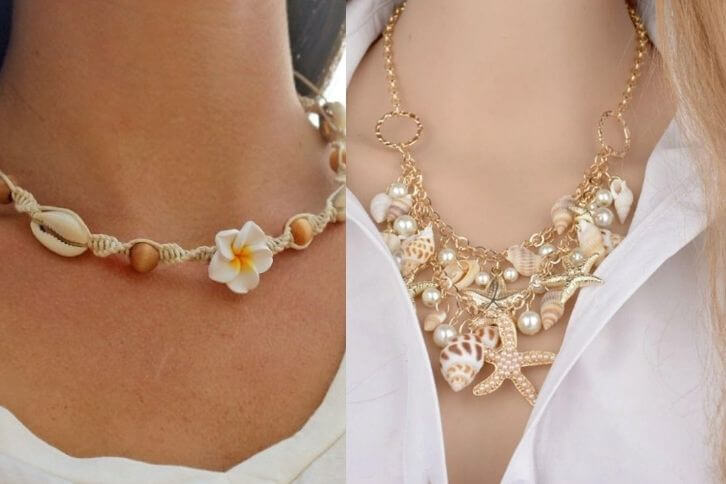

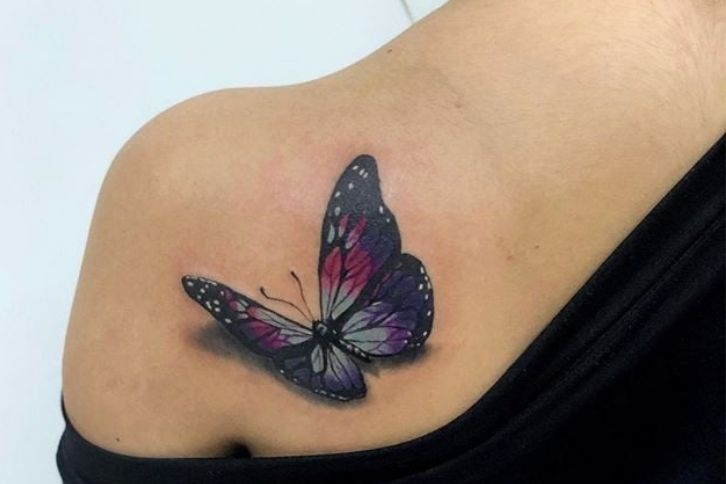
About Me
Fashion & Beauty Enthusiast
Hi, I'm Fanti. I'm a fashion, beauty, and lifestyle enthusiast, and the ultimate curves queen. Here, I share beauty, fashion, and lifestyle tips to teach, inspire, and give confidence to all women.